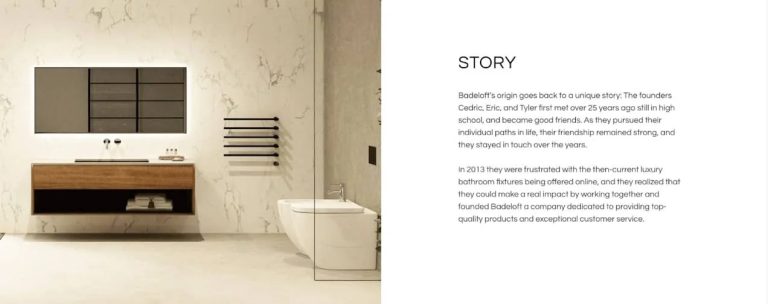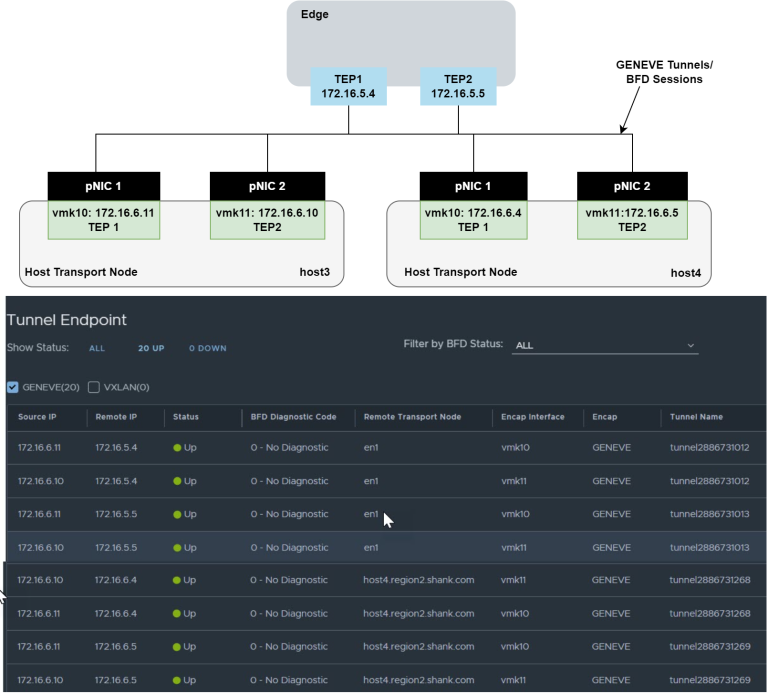The CSS Working Group (CSSWG) meets weekly (or close to it) to discuss and quickly resolve issues from their GitHub that would otherwise be lost in the back-and-forth of forum conversation. While each meeting brings interesting conversation, this past Wednesday (December 4th) was special. The CSSWG met to try and finally squash a debate that has been going on for five years: whether Masonry should be a part of Grid or a separate system.
I’ll try to summarize the current state of the debate, but if you are looking for the long version, I recommend reading CSS Masonry & CSS Grid by Geoff and Choosing a Masonry Syntax in CSS by Miriam Suzanne.
In 2017, it was frequently asked whether Grid could handle masonry layouts; layouts where the columns (or the rows) could hold unevenly sized items without gaps in between. While this is just one of several possibilities with masonry, you can think about the layout popularized by Pinterest:
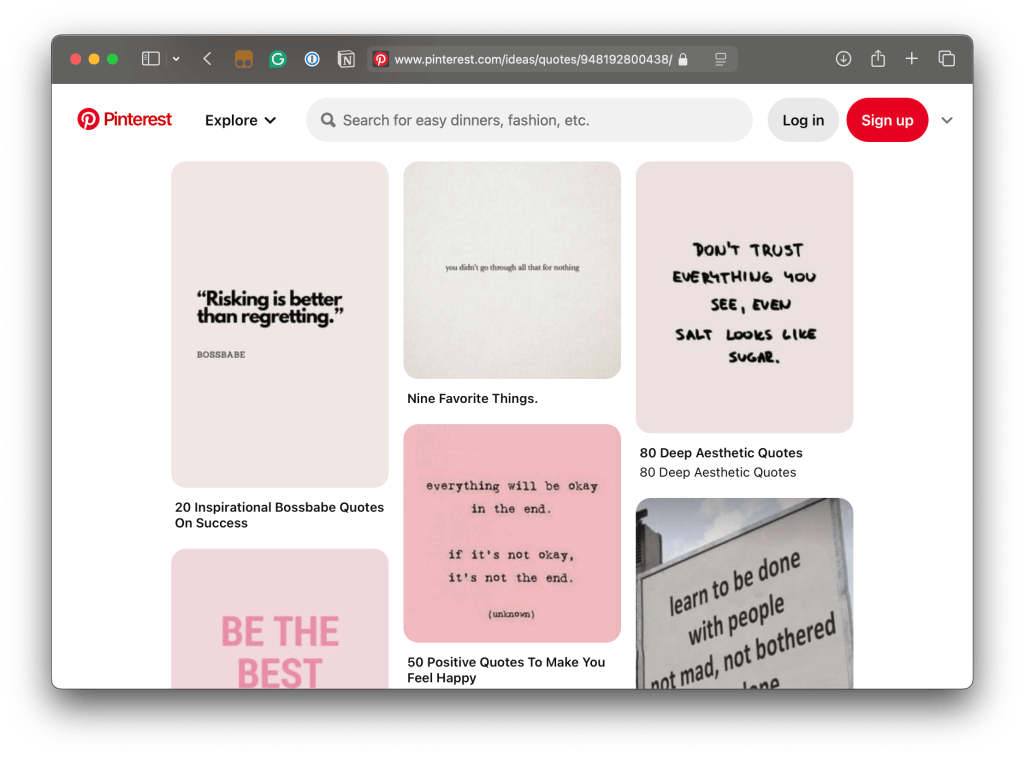
In 2020, Firefox released a prototype in which masonry was integrated into the CSS Grid layout module. The main voice against it was Rachel Andrew, arguing that it should be its own, separate thing. Since then, the debate has escalated with two proposals from Apple and Google, arguing for and against a grid-integrated syntax, respectively.
There were some technical worries against a grid-masonry implementation that were since resolved. What you have to know is this: right now, it’s a matter of syntax. To be specific, which syntax is
a. is easier to learn for authors and
b. how might this decision impact possible future developments in one or both models (or CSS in general).
In the middle, the W3C Technical Architecture Group (TAG) was asked for input on the issue which has prompted an effort to unify the two proposals. Both sides have brought strong arguments to the table over a series of posts, and in the following meeting, they were asked to lay those arguments once again in a presentation, with the hope of reaching a consensus.
Remember that you can subscribe and read the full minutes on W3C.org
Table of Contents
The Battle of PowerPoints
Alison Maher representing Google and an advocate of implementing Masonry as a new display value, opened the meeting with a presentation. The main points were:
- Several properties behave differently between masonry and grid.
- Better defaults when setting
display: masonry, something that Rachel Andrew recently argued for. - There was an argument against
display: masonrysince fallbacks would be more lengthy to implement, whereas in a grid-integrated the fallback to grid is already there. Alison Maher refutes this since “needing one is a temporary problem, so [we] should focus on the future,” and that “authors should make explicit fallback, to avoid surprises.” - “Positioning in masonry is simpler than grid, it’s only placed in 1 axis instead of 2.”
- Shorthands are also better: “Grid shorthand is complicated, hard to use. Masonry shorthand is easier because don’t need to remember the order.”
- “Placement works differently in grid vs masonry” and “alignment is also very different”
- There will be “other changes for submasonry/subgrid that will lead to divergences.”
- “Integrating masonry into grid will lead to spec bloat, will be harder to teach, and lead to developer confusion.”
alisonmaher: “Conclusion: masonry should be a separate display type”
Jen Simmons, representing the WebKit team and advocate of the “Just Use Grid” approach followed with another presentation. On this side, the main points were:
- Author learning could be skewed since “a new layout type creates a separate tool with separate syntax that’s similar but not the same as what exists […]. They’re familiar but not quite the same”
- The Chrome proposal would add around 10 new properties. “We don’t believe there’s a compelling argument to add so many new properties to CSS.”
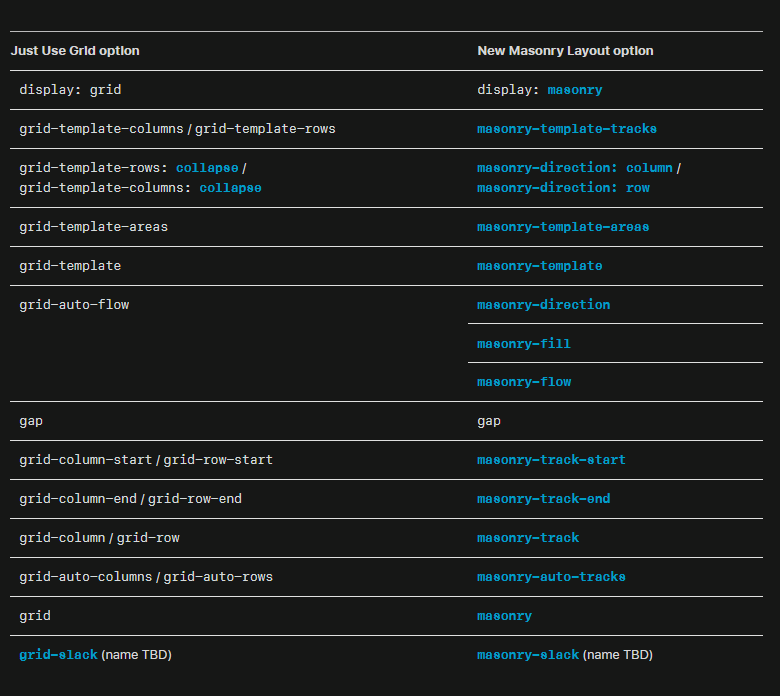
- “Chromium argues that their new syntax is more understandable. We disagree, just use
grid-auto-flow“ - “When you layout rows in grid, template syntax is a bit different — you stack the template names to physically diagram the names for the rows. Just Use Grid re-uses this syntax exactly; but new masonry layout uses the column syntax for rows”
- “Other difference is the auto-flow — grid’s indicates the primary fill direction, Chrome believes this doesn’t make sense and changed it to match the orientation of lines”
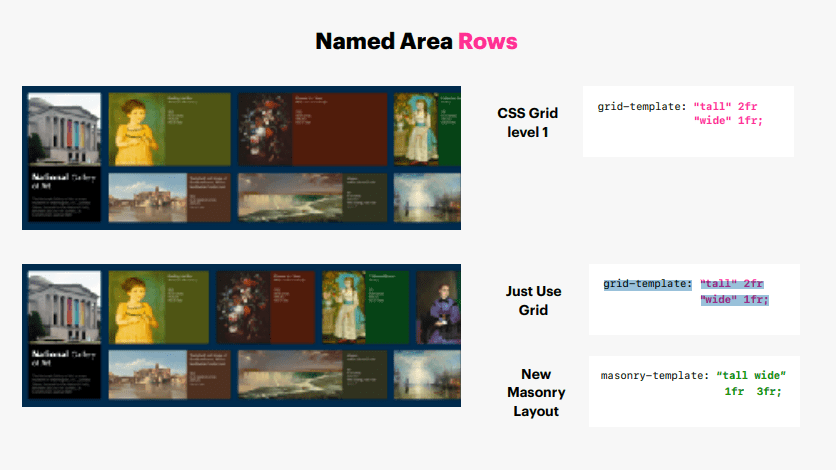
- “Chrome argues that new display type allows better defaults — but the defaults propose aren’t good […] it doesn’t quite work as easily as claimed [see article] requires deep understanding of autosizing”
- “Easier to switch, e.g. at breakpoints or progressive enhancement”
- “Follows CSS design principles to re-use what already exists”
The TAG review
After two presentations with compelling arguments, Lea Verou (also a member of the TAG) followed with their input.
lea: We did a TAG review on this. My opinion is fully reflected there. I think the arguments WebKit team makes are compelling. We thought not only should masonry be part of grid, but should go further. A lot of arguments for integrating is that “grid is too hard”. In that case we should make grid things easier. Complex things are possible, but simple things are not so easy.
Big part of Google’s argument is defaults, but we could just have smarter defaults — there is precedent for this in CSS if we decided that would help ergonomics We agree that switching between grid vs. masonry is common. Grid might be a slightly better fallback than nothing, but minor argument because people can use
@supports. Introducing all these new properties increasing the API surfaces that authors need to learn. Less they can port over. Even if we say we will be disciplined, experience shows that we won’t. Even if not intentional, accidental. DRY – don’t have multiple sources of truthOne of arguments against masonry in grid is that grids are 2D, but actually in graphic design grids were often 1D. I agree that most masonry use cases need simpler grids than general grid use cases, but that means we should make those grids easier to define for both grid and masonry. The more we looked into this, we realize there are 3 different layout modes that give you 2D arrangement of children. We recommended not just make masonry part of grid, but find ways of integrating what we already have better could we come up with a shorthand that sets
grid-auto-flowandflex-direction, and promote that for layout direction in general? Then authors only need to learn one control for it.
The debate
All was laid out onto the table, it was only left what other members had to say.
oriol: Problem with Jen Simmons’s reasoning. She said the proposed masonry-direction property would be new syntax that doesn’t match
grid-auto-flowproperty, but this property matchesflex-directionproperty so instead of trying to be close to grid, tries to be close to flexbox. Closer to grid is a choice, could be consistent with different things.
astearns: One question I asked is, has anyone changed their mind on which proposal they support? I personally have. I thought that separate display property made a lot more sense, in terms of designing the feature and I was very daunted by the idea that we’d have to consider both grid and masonry for any new development in either seemed sticky to me but the TAG argument convinced me that we should do the work of integrating these things.
TabAtkins: Thanks for setting that up for me, because I’m going to refute the TAG argument! I think they’re wrong in this case. You can draw a lot of surface-level connections between Grid and Masonry, and Flexbox, and other hypothetical layouts but when you actually look at details of how they work, behaviors each one is capable of, they’re pretty distinct if you try to combine together, it would be an unholy mess of conflicting constraints — e.g. flexing in items of masonry or grid or you’d have a weird mish-mash of, “the 2D layout.
But if you call it a flex you get access to these properties, call it grid, access to these other properties concrete example, “pillar” example mentioned in webKit blog post, that wasn’t compatible with the base concepts in masonry and flex because it wants a shared block formatting context grid etc have different formatting contexts, can’t use floats.
lea: actually, the TAG argument was that layout seems to actually be a continuum, and syntax should accommodate that rather than forcing one of two extremes (current flex vs current grid).
The debate kept back and forth until there was an attempt to set a general north star to follow.
jyasskin: Wanted to emphasize a couple aspects of TAG review. It seems really nice to keep the property from Chrome proposal that you don’t have to learn both, can just learn to do masonry without learning all of Grid even if that’s in a unified system perhaps still define masonry shorthand, and have it set grid properties
jensimmons: To create a simple masonry-style layout in Grid, you just need 3 lines of code (4 with a gap). It’s quite simple.
jyasskin: Most consensus part of TAG feedback was to share properties whenever possible. Not necessary to share the same ‘display’ values; could define different ‘display’ values but share the properties. One thing we didn’t like about unified proposal was
grid-auto-flowin the unified proposal, where some values were ignored. Yeah, this is the usability point I’m pounding on
Another Split Decision
Despite all, it looked like nobody was giving away, and the debate seemed stuck once again:
astearns: I’m not hearing a way forward yet. At some point, one of the camps is going to have to concede in order to move this forward.
lea: What if we do a straw poll. Not to decide, but to figure out how far are we from consensus?
The votes were cast and the results were… split.
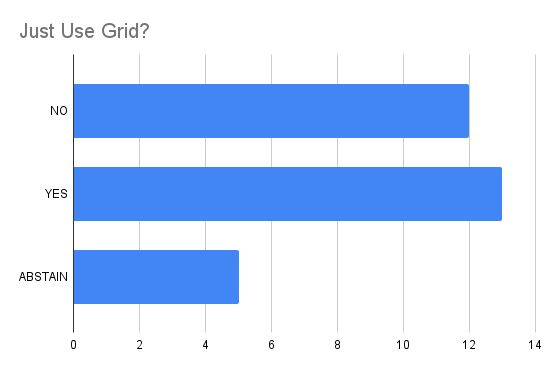
florian: though we could still not reach consensus, I want to thank both sides for presenting clear arguments, densely packed, well delivered. I will go back to the presentations, and revisit some points, it really was informative to present the way it was.
That’s all folks, a split decision! There isn’t a preference for either of the two proposals and implementing something with such mixed opinions is something nobody would approve. After a little over five years of debate, I think this meeting is yet another good sign that a new proposal addressing the concerns of both sides should be considered, but that’s just a personal opinion. To me, masonry (or whatever name it may be) is an important step in CSS layout that may shape future layouts, it shouldn’t be rushed so until then, I am more than happy to wait for a proposal that satisfies both sides.

